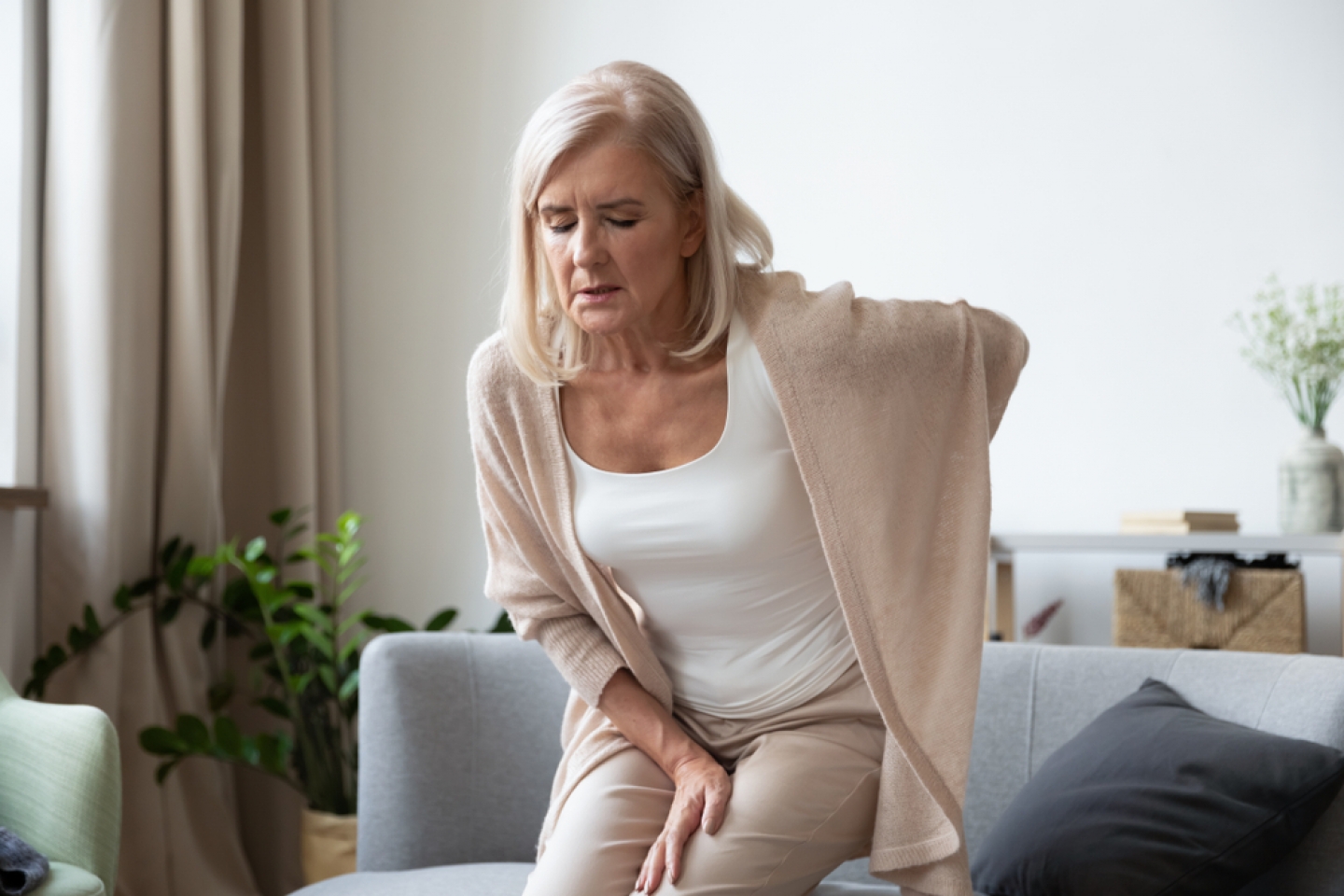
Of the many physical changes that mark menopause, one is a drop in your body’s estrogen production. When your body’s production of estrogen declines, a variety of physical and emotional changes may result, including irregular periods, hot flashes, mood swings, and a period of accelerated bone loss that leads to the ‘brittle bone disease’ known as osteoporosis.
Estrogen loss is not the only cause of osteoporosis. It can also stem from steroid use or a malfunctioning thyroid gland, changes in weight or body mass index, insufficient intake of calcium and vitamin D intake, too little physical activity, excessive alcohol consumption, family history of osteoporosis, and smoking. Other risk factors include:
Nearly half of all post-menopausal women older than age 50 will develop osteoporosis at some point in their lives, says Assistant Professor Nasim A. Chowdhury, M.D. “Those at the highest risk of developing osteoporosis are white or Asian, post-menopausal women over the age of 50,” Dr. Chowdhury says. “It is important to keep in mind though that men and women of all races can still develop osteoporosis,” he says. Moreover, the age of onset of osteoporosis differs between genders. Some women report osteoporosis in the hip beginning at age 55, while men report it often beginning at age 60, he adds.
Since osteoporosis is usually not detected until you sustain your first fracture, it is often called ‘a silent disease.’ “Osteoporosis oftentimes gets diagnosed only because of pain from an osteoporotic fracture,” Dr. Chowdhury says. In fact, approximately half of women older than 50 will experience a fracture--most often of the hip, spine, or wrist--related to osteoporosis. Other common symptoms include:
Many women incorrectly assume that as long as they do not have a fracture, they do not have osteoporosis. Conversely, women often erroneously attribute their achy hips or feet to osteoporosis, which is unlikely in the absence of fracture.
“This highlights the importance of screening,” Dr. Chowdhury says. “It is recommended that women older than 65 (even without risk factors) or women under 65 with risk factors get screened,” he says. Screening is most often done with a special type of x-ray called DEXA (dual x-ray absorptiometry) which allows for the measurement of bone density.
Although certain risk factors for osteoporosis such as age, gender, or race are considered “unmodifiable,” others risk factors are “modifiable,” and addressing them can help you manage or even prevent the disease.
“Leading a sedentary lifestyle increases the risk of developing osteoporosis, and so exercising, especially with resistance, is one of the best ways to maintain healthy bones,” Dr. Chowdhury says. “Quitting smoking and decreasing your alcohol intake will also result in healthier bones, among other benefits,” he says. “Eating a balanced diet, especially one with adequate calcium and Vitamin D, is also crucial to maintaining healthy bones.”
Osteoporosis is typically thought of as a disease of the elderly, but it can affect women younger than age 50. To reduce their risk of developing osteoporosis, young women should take care of their skeletal health, particularly during the bone-forming years of adolescence, by doing weight-bearing exercises such as lifting light weights, walking, hiking, jogging, climbing stairs, tennis, or dancing; eating a healthy diet with enough calcium and vitamin D; avoiding excessive alcohol consumption; and not smoking.
If you are older than 50 and already have lost substantial bone density, then you may want to ask your doctor about hormonal or non-hormonal medicines to slow bone loss and help rebuild bone. Hormone therapy can also help control menopausal symptoms, especially hot flashes, and night sweats. It may not be appropriate for women with certain medical conditions, however, especially those who are at risk for breast cancer, stroke, heart attack, or blood clots.
How to treat bone loss depends on your overall health, which is why you should consult a specialist about the treatments that are best for you.